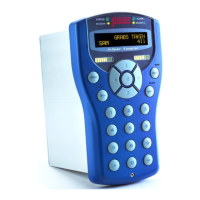• Modbus Master –instance of Modbus master must have its own dedicated serial
port. The InSpec serial ports are able to run Modbus on either an RS232, RS422
or an RS485. Once Modbus is selected to work on the port the following are
standard configuration options when running Modbus over a serial link
• Select RS Mode – (This is the electrical characteristic of the serial
communication). The InSpec supports the following internationally
recognised RS modes: RS- 232, RS 422/485.
• Baud rate – (the communication rate)
• Parity setup – (simple error check in serial data transmission). As per
the Modbus standard, Modbus has 1 stop bit when parity is either odd or
even and 2 stop bits when parity is none.
• Mode – The Protocol Type (RTU or ASCII), Modbus RTU is a compact,
binary representation of the data and uses 8 bits. Modbus ASCII is
human readable, and a more verbose protocol which uses 7 bits.
• Modbus String Size – Here you can enter the configurable length of
Modbus strings. The default is 20.
• Float Mode – This implementation of the Modbus protocol supports both
32 bit and 64 bit floating point numbers. Here you can indicate which
method you wish to use.
• The float and the long word order – Floating point registers and long
registers each require two or more Modbus addresses / consecutive
reads. The order of these addresses may be swapped to communicate
with a customer’s interface.
• RTU Timeout – If in RTU mode, you are now prompted for the RTU
timeout value (in milliseconds). The default is 40 milliseconds.
• Poll Retries – In master mode the InSpec polls connected slave
devices. In the event of a poll timeout, the node can be polled again.
This is the number of retries to attempt.
• Delay between Polls – This configurable value in milliseconds can be
set to fine tune a Modbus connection when communication problems
occur, typically when using half-duplex communication system.
• Modbus Start Offset – The Modbus address offset can vary between
different devices/implementations. This allows a variable offset to be
entered for this session.
• Query To Edit – Here you are asked which query, 1 thru 20, that you
wish to edit. In Modbus master you can create/edit up to 20 queries.
These are individual or sequences that query a specific slave device on
the Modbus network. When editing a query, you will be prompted for the
following:
• Enable Query – First you are asked if you wish to enable this
specific query. It can be configured but disabled for later use if
required.
• Node to access – Here you enter the number of the specific
slave device node that you are querying.
• Function (read/write) – Here you state whether this query is a
read or a write command.
• Write / Read Modbus address – Here you enter which
Modbus address you are writing to or reading from.
• Source register – This is the name of the first register to be
acted on.
• Number of registers – Now enter the number of registers that
you wish to read/write to/from. The minimum is 1.
By default, the four ports are set up as follows
• Port 0 → Shell (Not Configurable)

